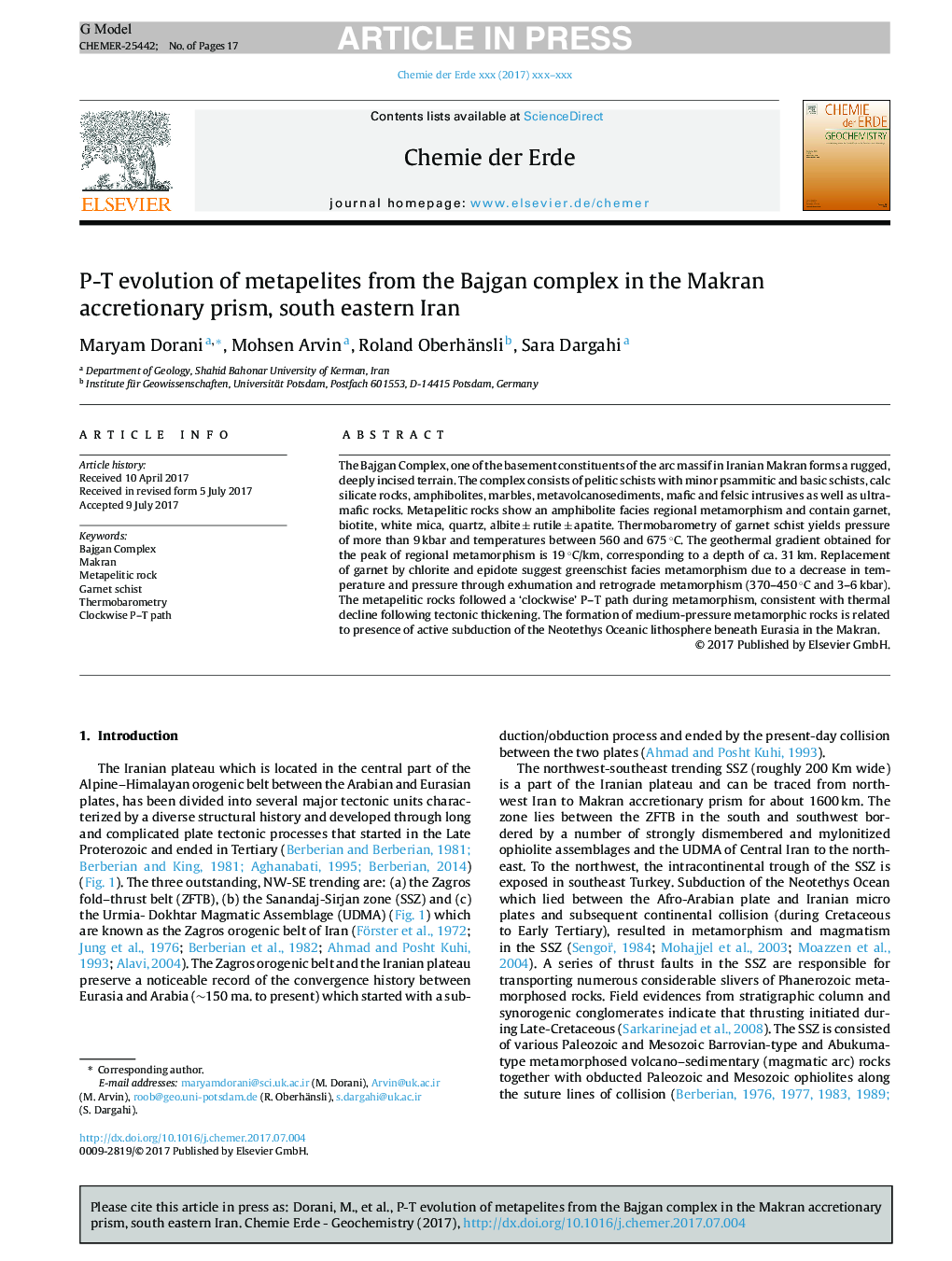| Article ID | Journal | Published Year | Pages | File Type |
|---|---|---|---|---|
| 8850221 | Chemie der Erde - Geochemistry | 2017 | 17 Pages |
Abstract
The Bajgan Complex, one of the basement constituents of the arc massif in Iranian Makran forms a rugged, deeply incised terrain. The complex consists of pelitic schists with minor psammitic and basic schists, calc silicate rocks, amphibolites, marbles, metavolcanosediments, mafic and felsic intrusives as well as ultramafic rocks. Metapelitic rocks show an amphibolite facies regional metamorphism and contain garnet, biotite, white mica, quartz, albite ± rutile ± apatite. Thermobarometry of garnet schist yields pressure of more than 9 kbar and temperatures between 560 and 675 °C. The geothermal gradient obtained for the peak of regional metamorphism is 19 °C/km, corresponding to a depth of ca. 31 km. Replacement of garnet by chlorite and epidote suggest greenschist facies metamorphism due to a decrease in temperature and pressure through exhumation and retrograde metamorphism (370-450 °C and 3-6 kbar). The metapelitic rocks followed a 'clockwise' P-T path during metamorphism, consistent with thermal decline following tectonic thickening. The formation of medium-pressure metamorphic rocks is related to presence of active subduction of the Neotethys Oceanic lithosphere beneath Eurasia in the Makran.
Keywords
Related Topics
Physical Sciences and Engineering
Earth and Planetary Sciences
Geochemistry and Petrology
Authors
Maryam Dorani, Mohsen Arvin, Roland Oberhänsli, Sara Dargahi,
